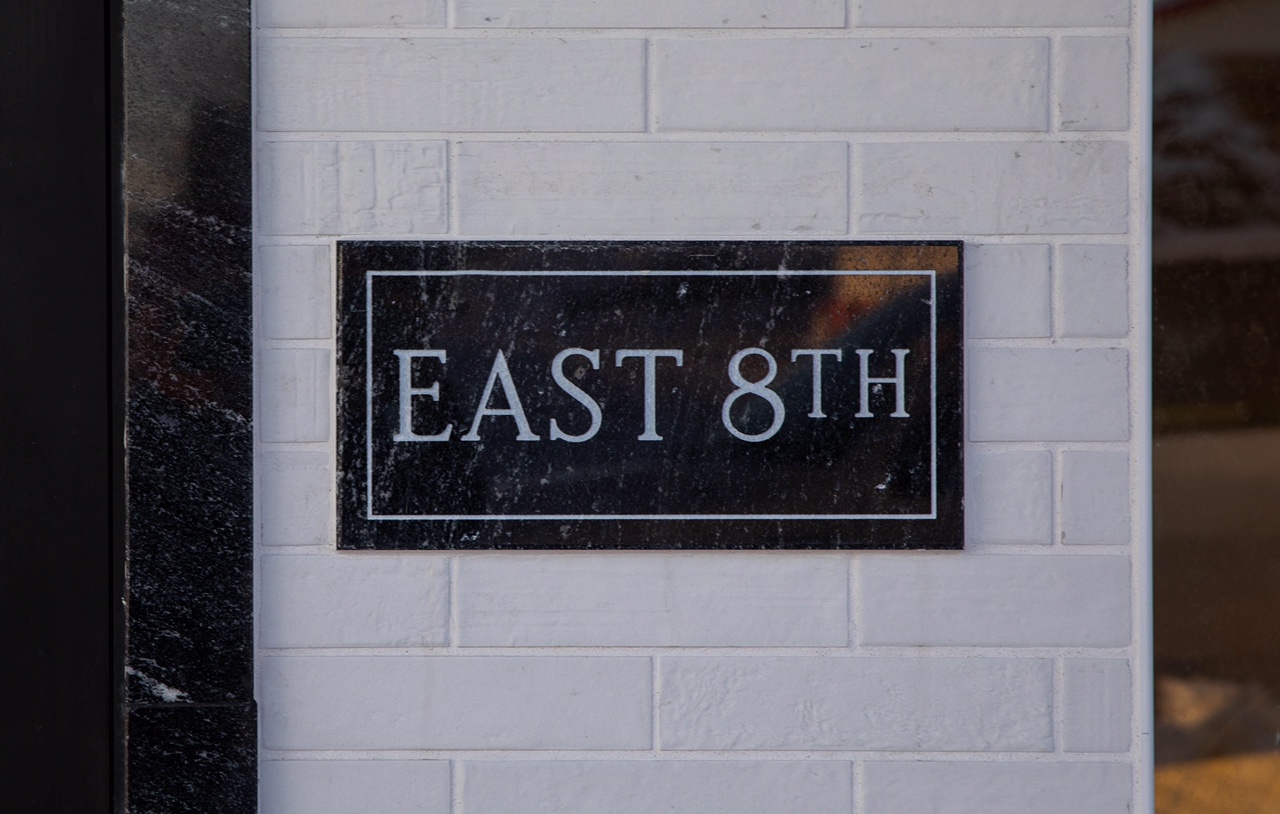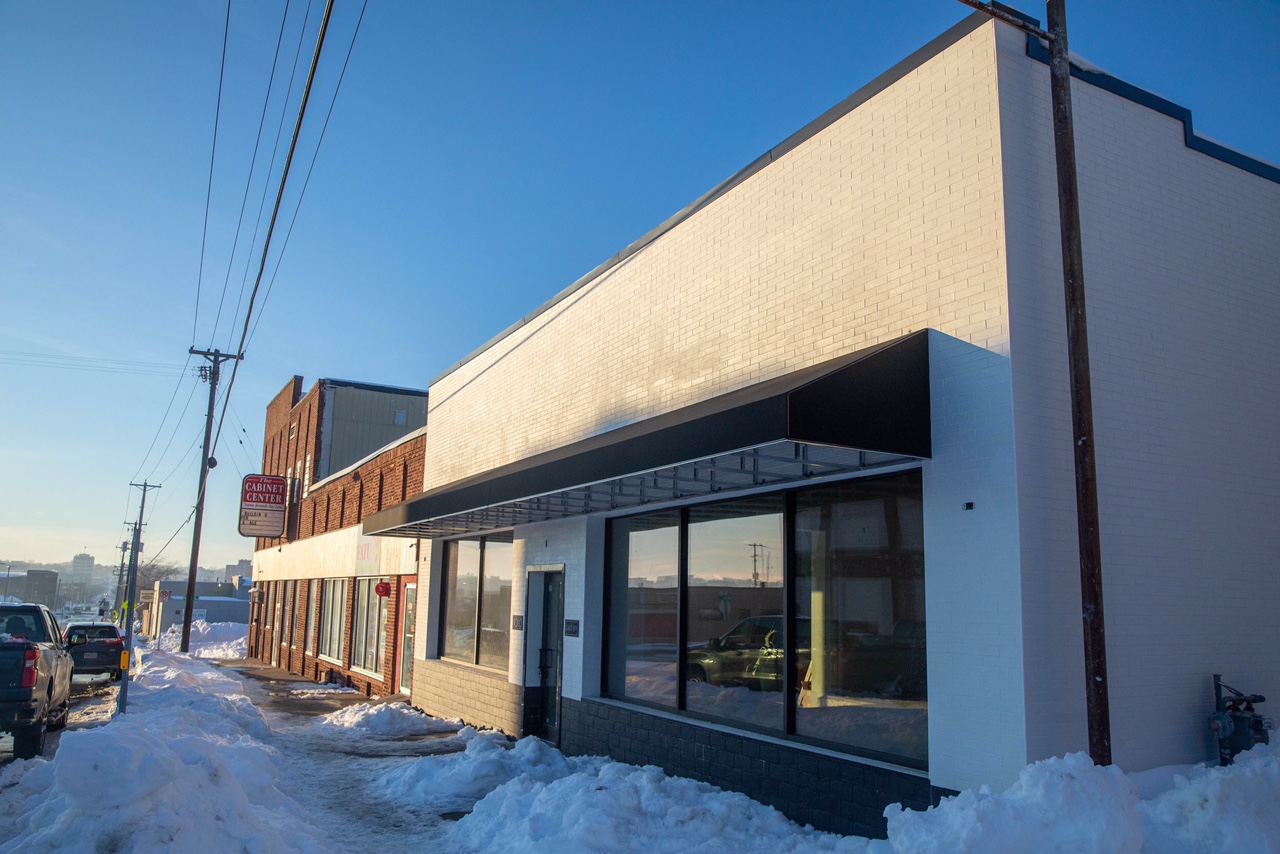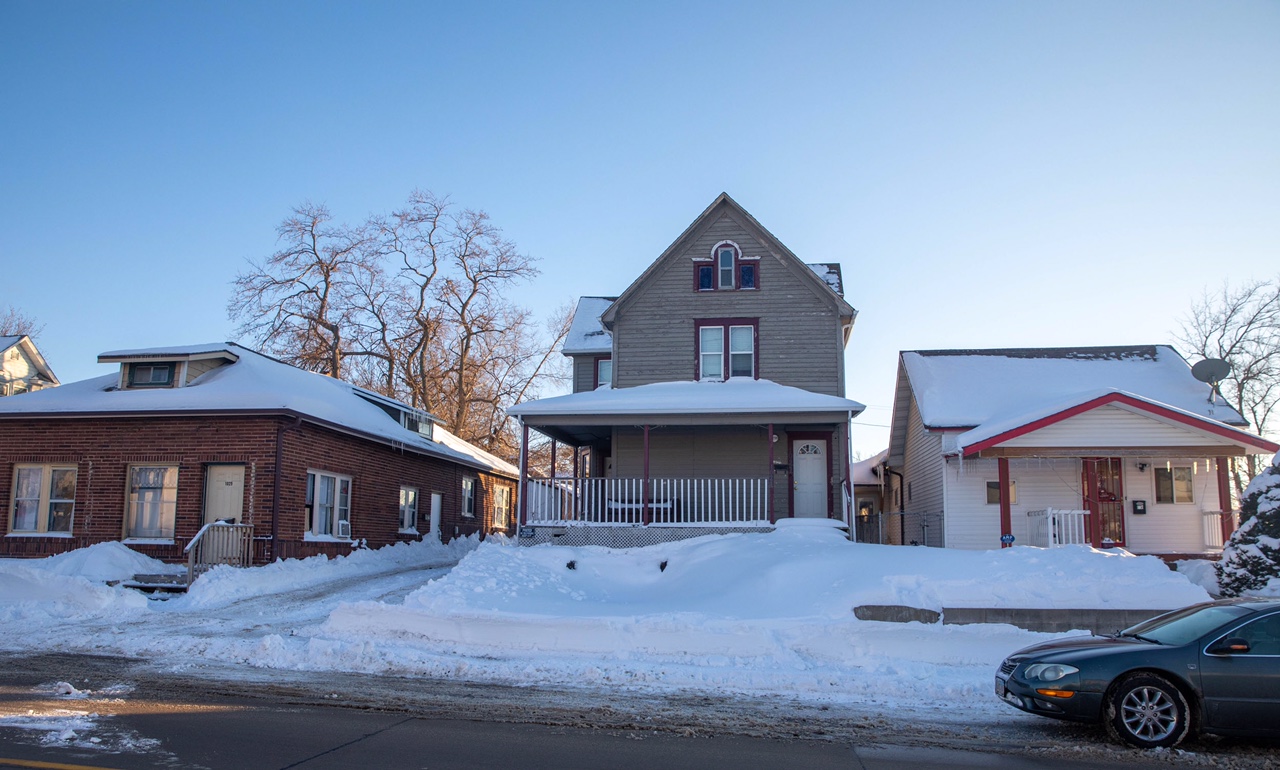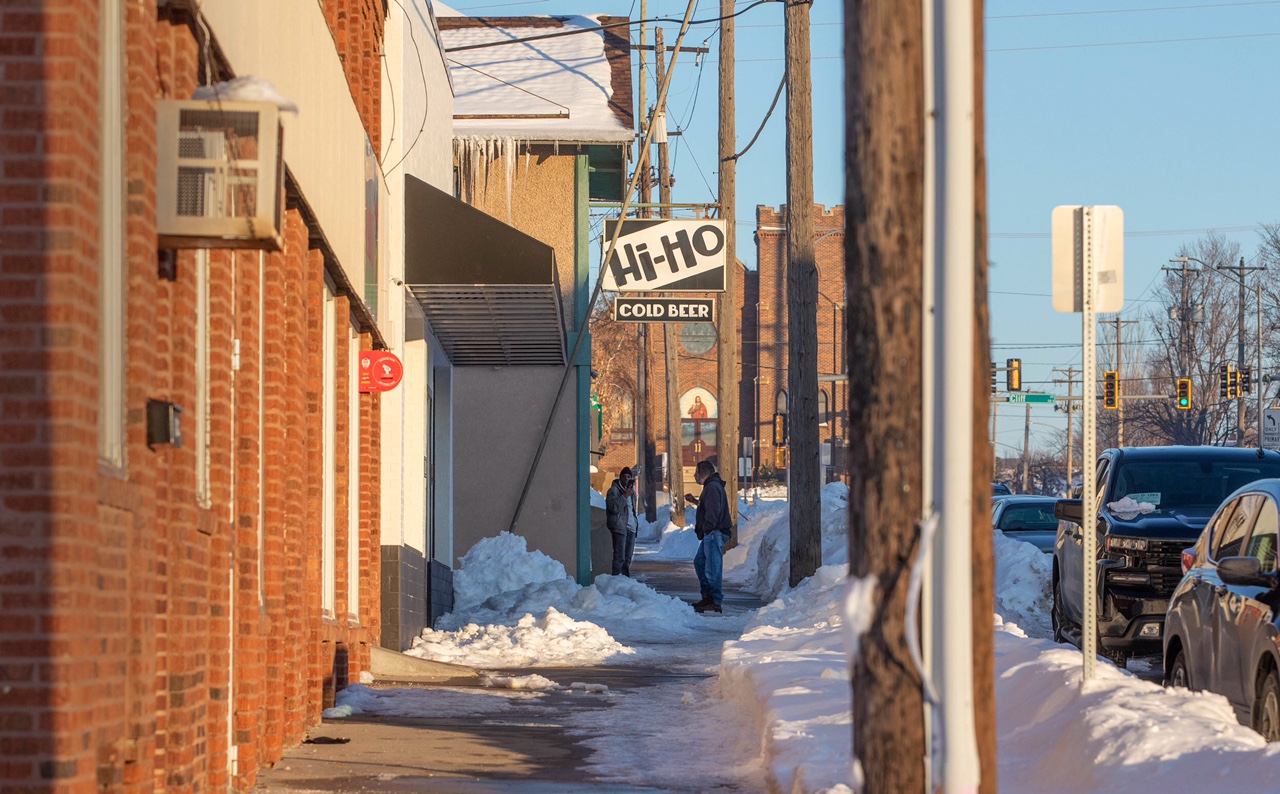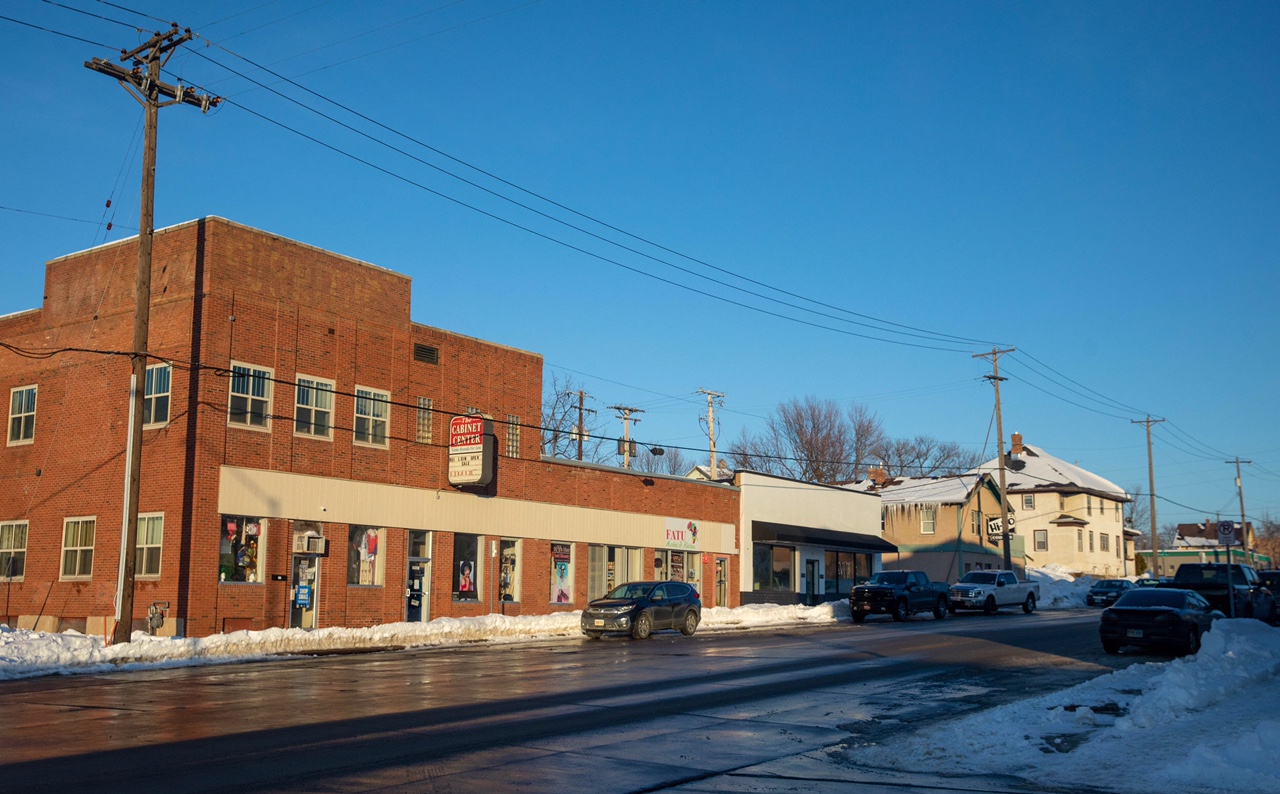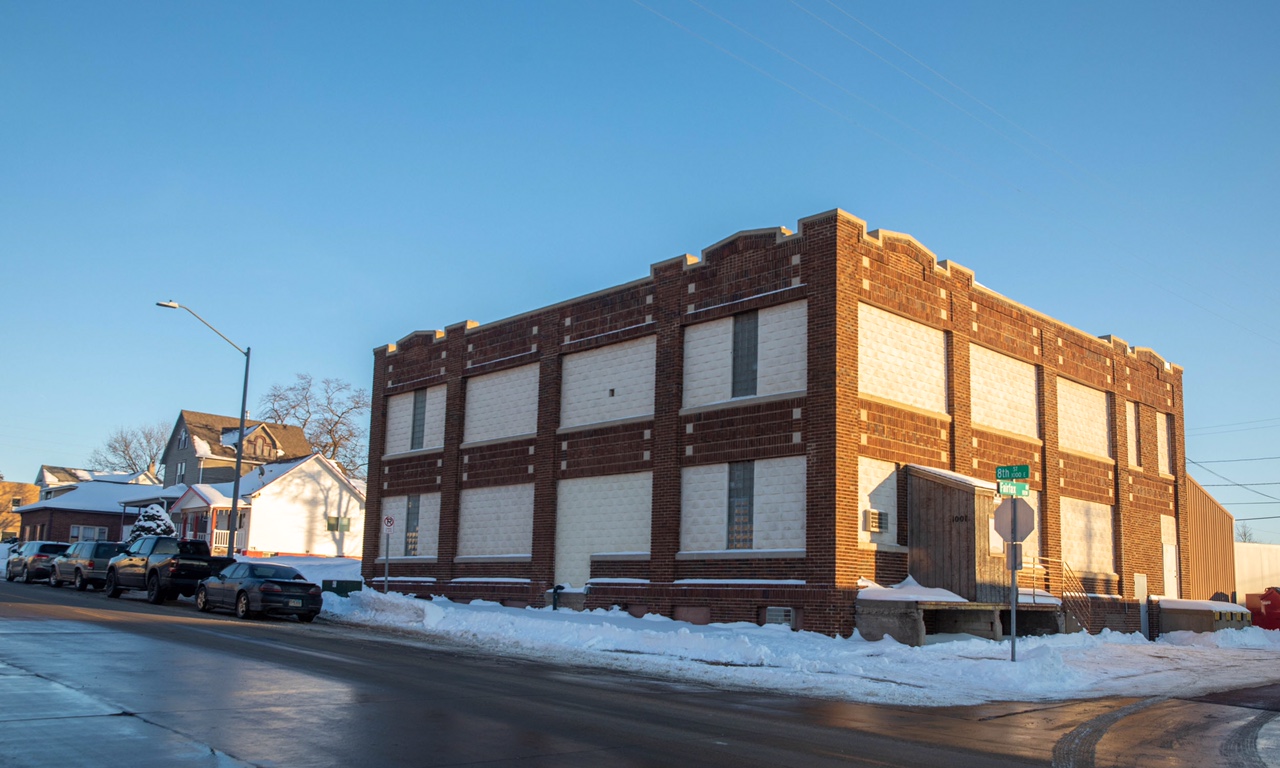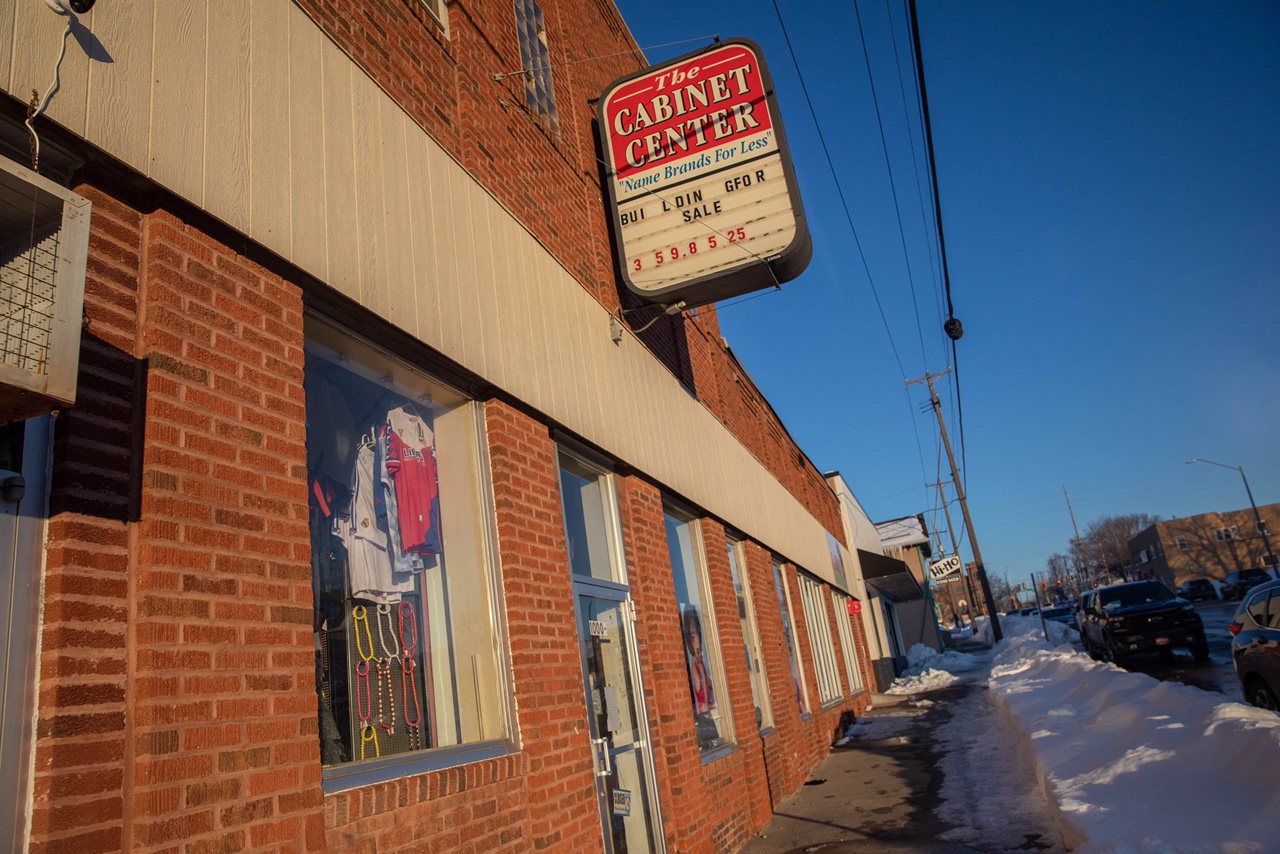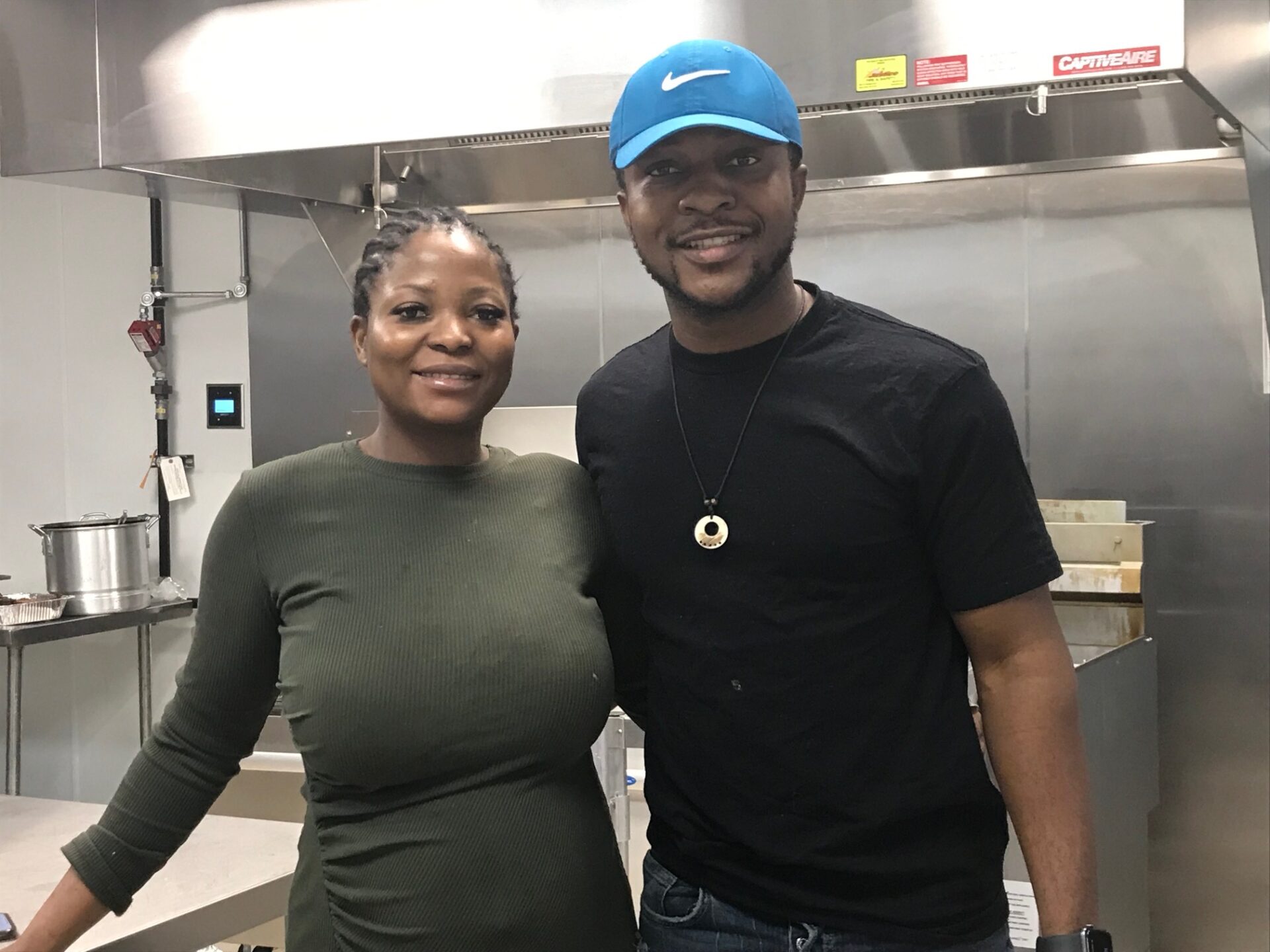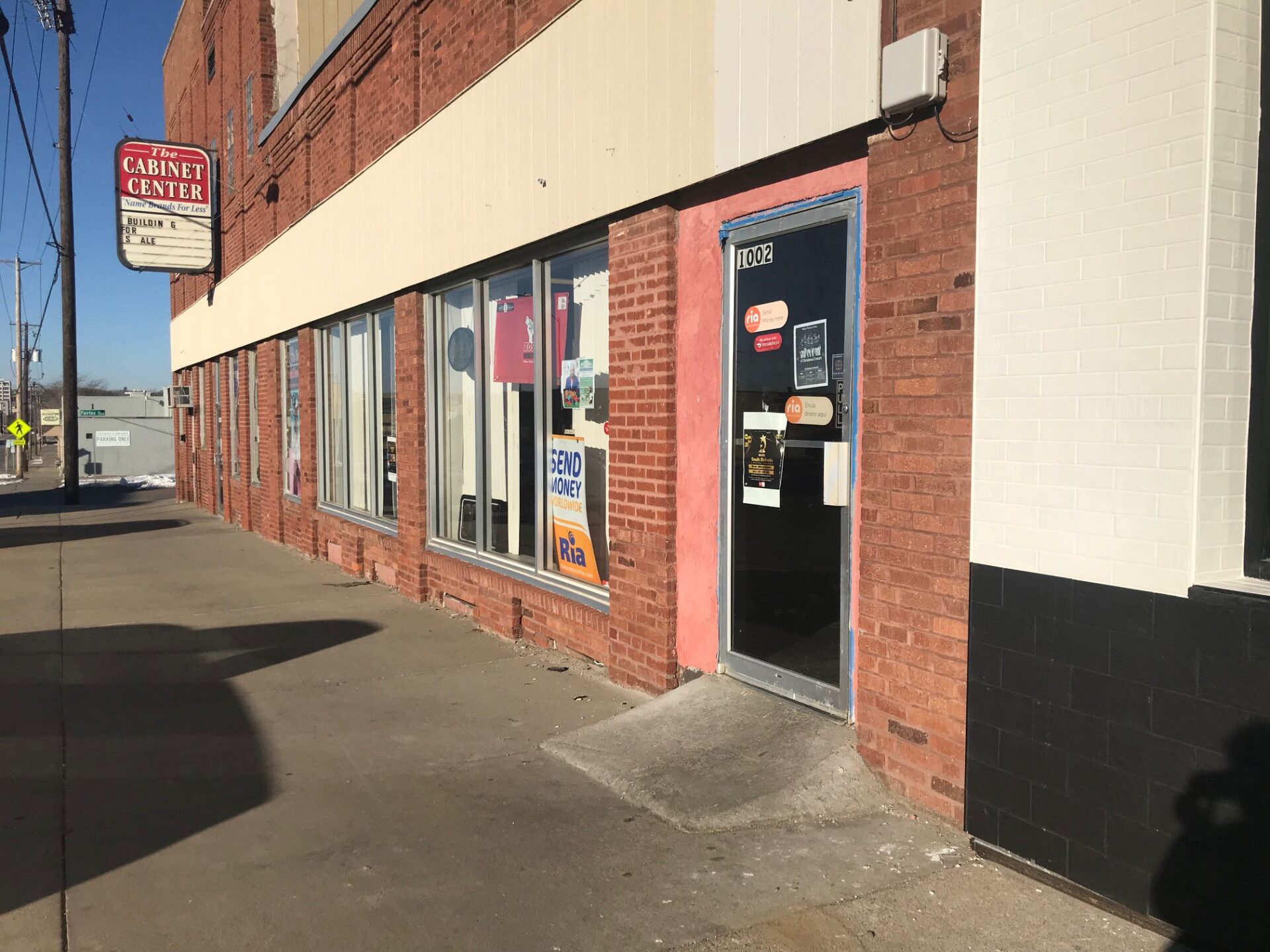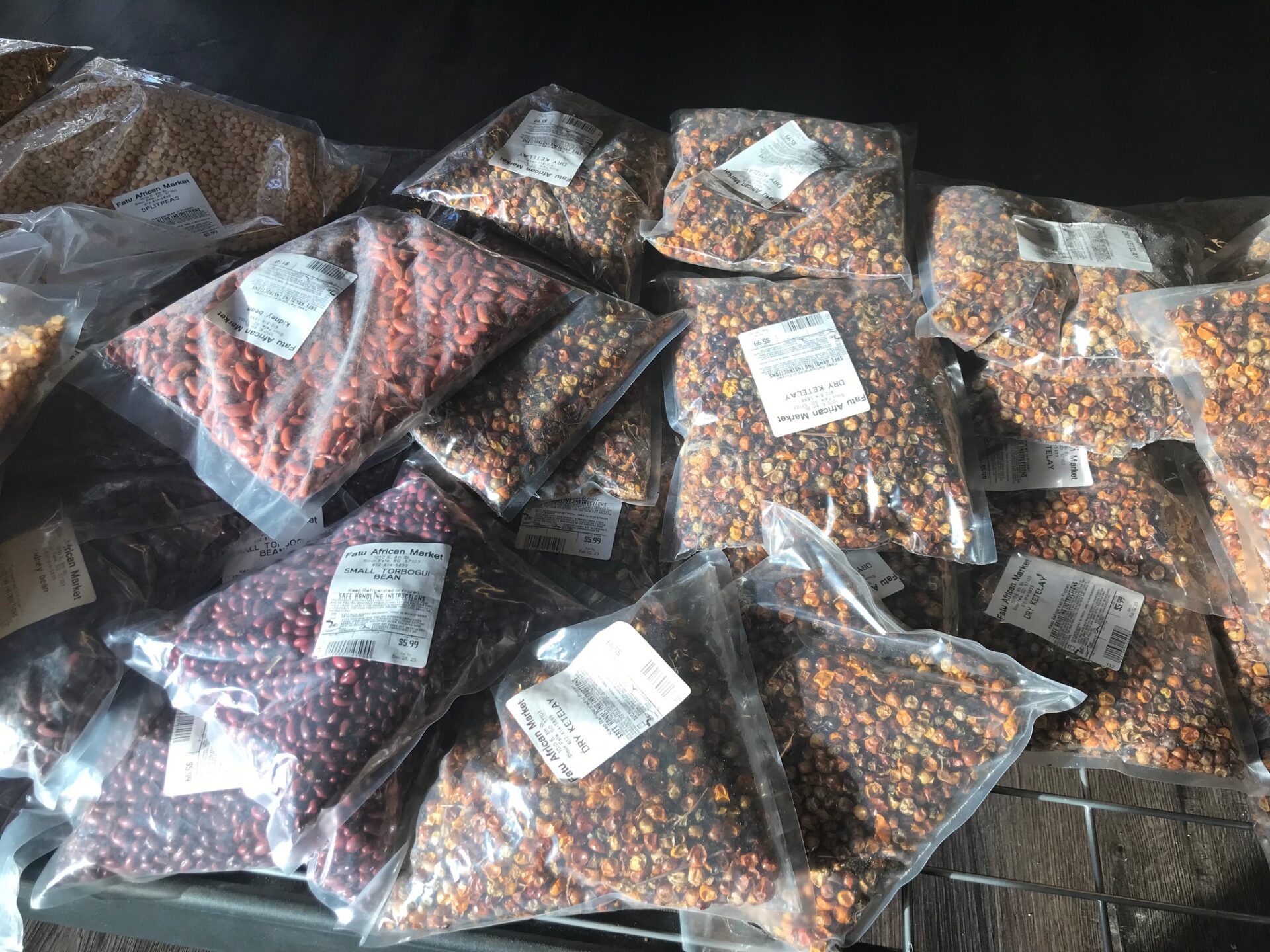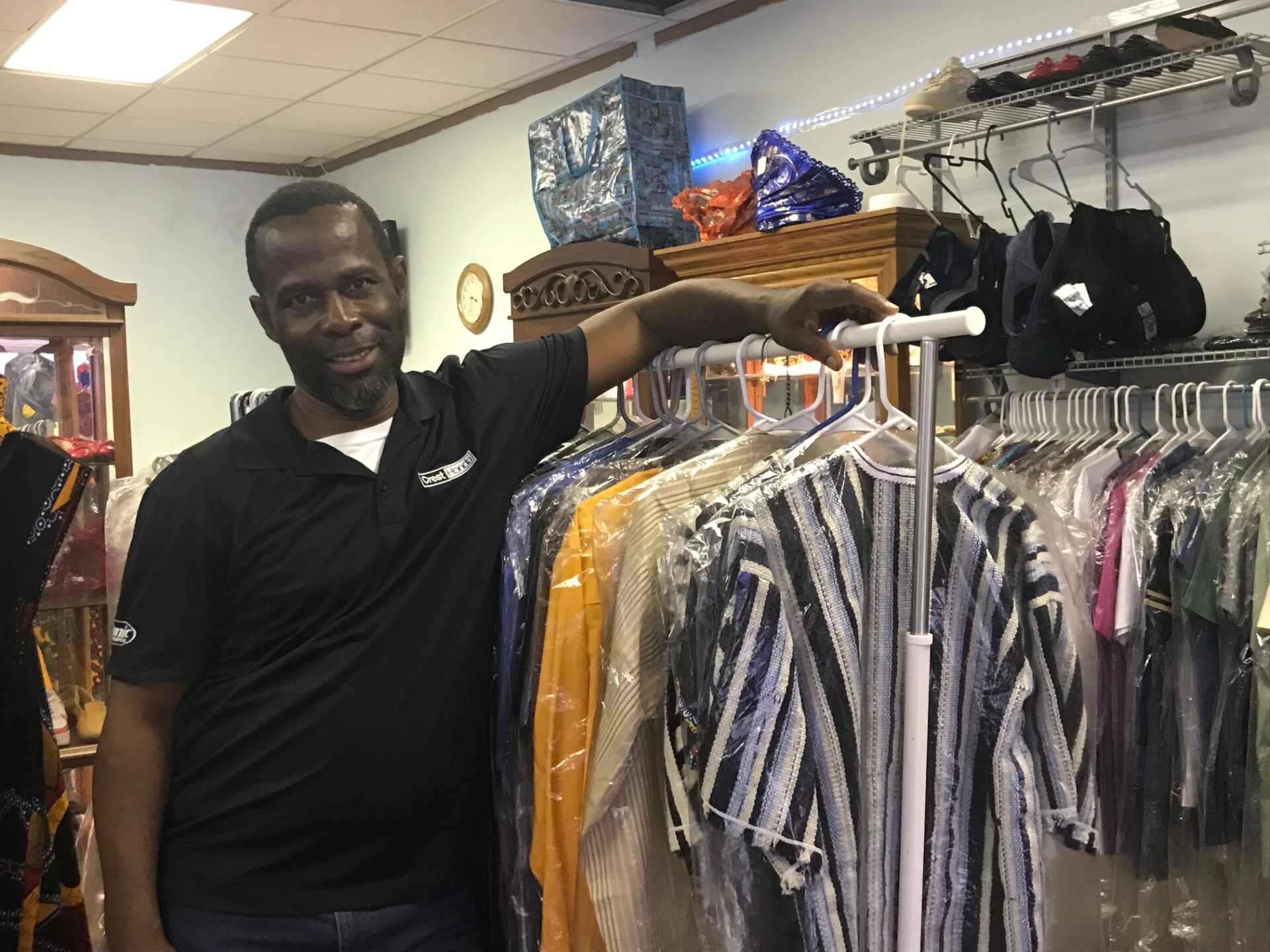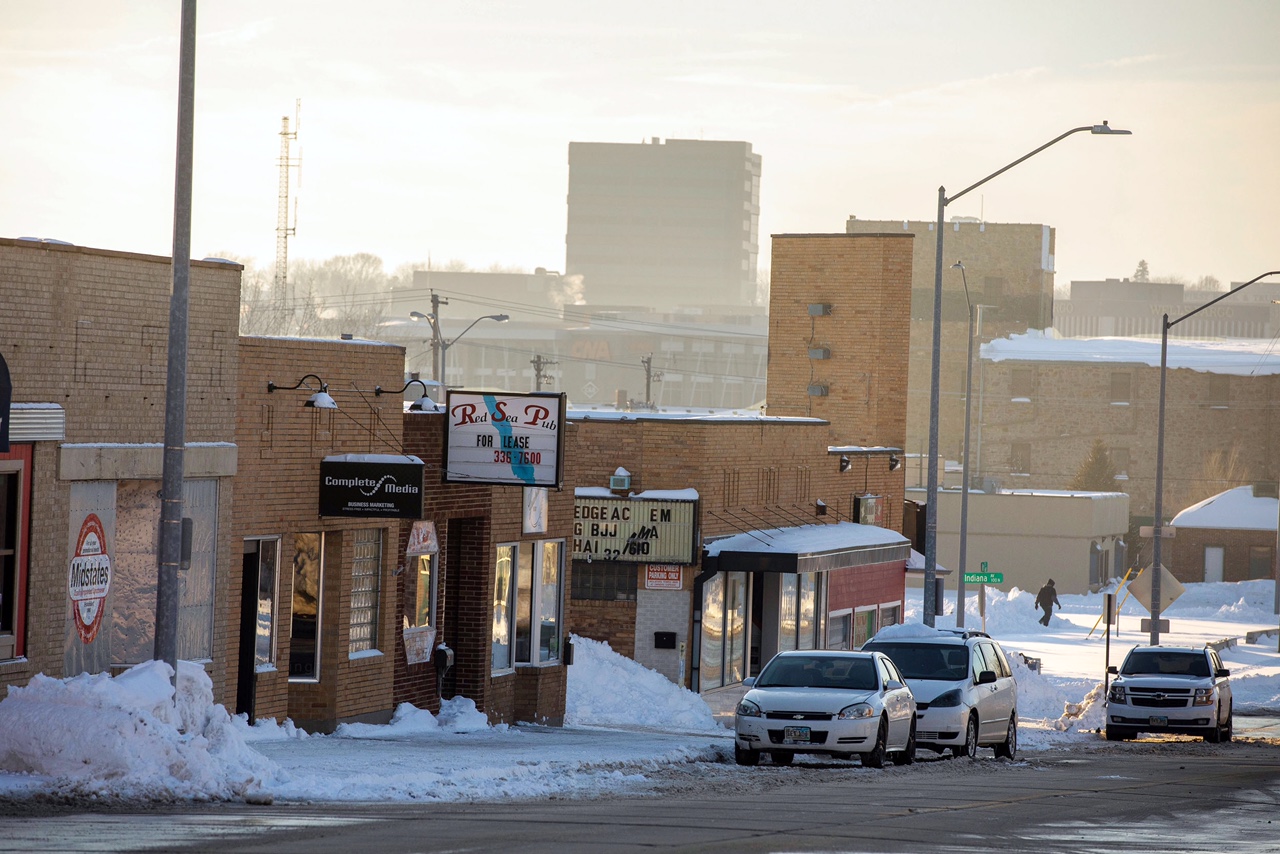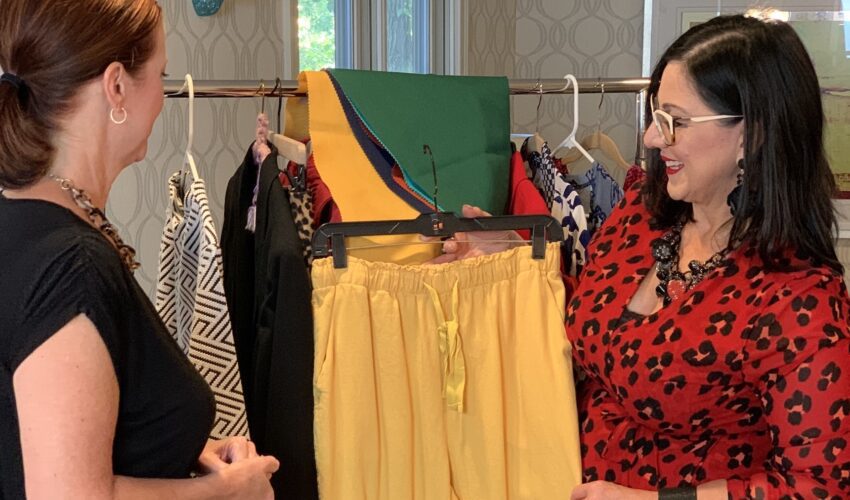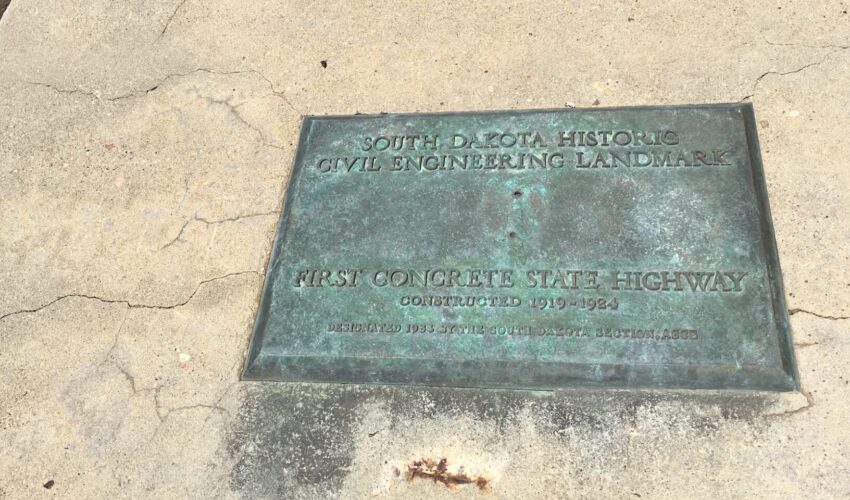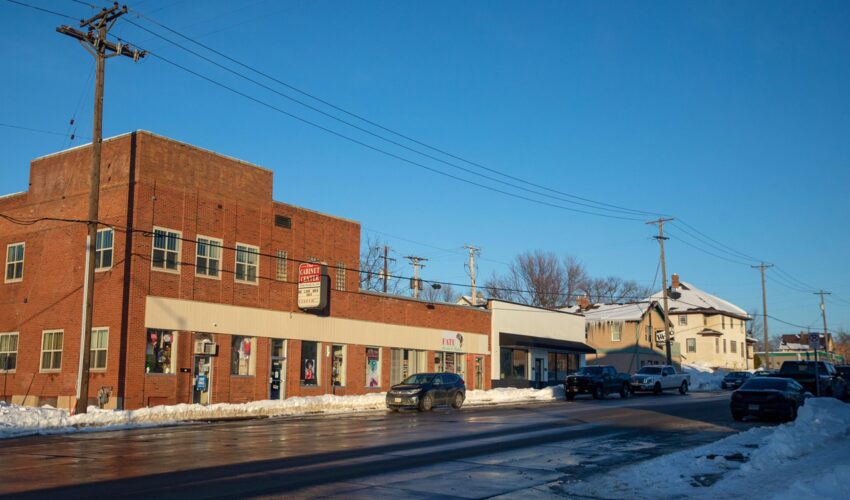Downtown microneighborhood ripe for building ‘the next generation of businesses’
Feb. 13, 2023
Walk inside the doors at 1002 E. Eighth St., and Ralph and Fatu Cooper will welcome you into their food market stocked with 100-pound bags of rice, boxes of fufu flour and frozen slabs of fish.
A few steps to the east at 1014 E. Eighth St., and you’re at the door of Walters HiHo Tavern, a neighborhood fixture for decades.
In between those buildings at 1010 E. Eighth St., you’ll find infinite possibility. That’s because Dave Syverson, who purchased the property with a partner in 2022, doesn’t know yet who will rent the 100-year-old building. However, he is confident a retailer, restaurateur or entrepreneur will see the same possibilities in this microneighborhood that he sees.
“There’s opportunity all around the city, but I do like downtown and the closer to the core you can get,” said Syverson, co-owner of Syverson Tile & Stone. “I have always been a fan of downtown Sioux Falls and the development going on there.”
While Eighth Street closer to Phillips Avenue has seen enormous growth in recent years, Eighth Street between Nesmith and Cliff avenues has lagged behind. It has a more unique character and houses that the central downtown area lacks. Directly east of the HiHo, for example, is North Fairfax Avenue, lined almost universally with two-story houses built a century ago.
Michelle Traupel purchased her home on North Franklin Avenue 12 years ago. New high-rise construction means the Avera Health employee no longer can see St. Joseph Cathedral from her windows that look west.
The neighborhood isn’t as quiet as it once was, Traupel said, although foot traffic slows down in the winter. Overall, though, she accepts that change happens, and she enjoys what nearby East Eighth Street has to offer.
Four town houses facing Nesmith Avenue stood empty for months, and Traupel would look out her windows and wonder who would move in and when. Now, as they have filled up, she enjoys having neighbors nearby who look after each other. It gives the area stability and security, she said.
“I like my neighborhood. I like my neighbors. I don’t see myself living anywhere else,” Traupel said. “I’ve made it my home, I like living here, I like my neighbors, I can walk downtown, I don’t have to worry about any parking. I’m happy here.”
For this microneighborhood to grow, it needs residents’ buy-in. Monte Patterson, owner of the HiHo, thinks it has it. He knows of several city employees who have chosen to make the houses north of Eighth Street their home.
At the same time, business owners moving into the area must be aware, as an attorney friend of Patterson’s put it, that they don’t “gentrify” the neighborhood to the point where longtime residents feel they no longer have a place.
“At some point, you say, when is it gentrification as opposed to fixing the neighborhood up,” Patterson said. “You don’t want to improve it and raise property values so people can’t afford it. We don’t want that to happen.”
Patterson appreciates what Syverson is doing at 1010 E. Eighth St. — improving the exterior and the interior — and it likely will spur him on to renovating the HiHo’s exterior, he said.
“From what I’ve been told, Eighth Street used to be called the gateway to downtown. I think some folks that are part of the city Planning & Development (Services) are trying to kind of rebuild that, which again goes back to some of the construction and new development,” Patterson said.
“If you come in and tear buildings down and the HiHo and some of the houses across the street, you tear down and rebuild new like downtown, that could pose a bit of an issue with the neighborhood.”
This is Syverson’s first venture into developing an existing building. While large projects such as the new Cherapa Place 2, a 10-story retail and office building with luxury condos on the top floor being constructed on North Reid Place, attract the attention, smaller developments also are essential, he said.
“The highlights are downtown and the big-tickets projects,” Syverson said “But the way those ripple through the neighborhood is something you feel on the ground.”
“It’s looking really good,” said Raquel Blount of Lloyd Cos., who has the property listed for lease. “It’s really kind of cool if you go inside. There’s wood floors, and I think it could be a little retail shop, a salon, a sandwich shop maybe.
“It’s nice to see the rehabilitation and remodel of the area and just tying in with everything going on to the west – 8th & Railroad and all the new projects across the street.”
A Sioux Falls native, Syverson had no interest in tearing down a building with deep roots on East Eighth Street. In fact, he regrets the loss of some of city’s historic quartzite structures that were removed decades ago. He purchased a repurposed beam from the Frank Building, six blocks west on Eighth Street, and used that during the renovation. The Frank Building was constructed in 1916, and the beams were removed in the 1990s.
“They’ve been sitting in his (Terry Swift’s) old shop for 20, 30 years now,” Syverson said. “It was a neat find.”
According to a report prepared by the city of Sioux Falls in 2019, more than 40 businesses are located on and around East Eighth Street between Weber and Cliff avenues. Many of those have been there for years. Midstates Branding & Imprinting Services on East Eighth was founded in 1960. Electric Supply Co. started in Sioux Falls in 1923 and continues to be family owned.
For decades, the building at 1010 E. Eighth St. has drawn in both those who dwell in the neighborhood and those who live elsewhere. According to research done by local historian Eric Renshaw, a grocery store occupied that building before and during World War II. Another grocery store took its place in 1946, but that soon was converted into a full-time bicycle shop, Storms Cycle & Supply. It eventually closed about 1980.
The Coopers first opened their combination grocery story and restaurant at 1010 E. Eighth St. before purchasing the former The Cabinet Center building and moving directly west. The couple moved from Fargo to Sioux Falls in 2019 with $7,000 and a dream.
They Googled “places that have never had an African market” before choosing Sioux Falls, Fatu Cooper said.
Even though it has been difficult at times — at one point, unable to afford rent on an apartment, they slept at the store — “we’re strong enough to make it work,” she said.
She worked at LifeScape while Ralph Cooper took a job at DakotAbilities to provide the income needed as the store and the restaurant began to grow. The restaurant now is open from 10 a.m. to 5 p.m., with the grocery story opening one hour earlier. Business at the grocery store has flourished so much the Coopers now have two part-time employees.
Ralph Cooper hopes to have The Cabinet Center sign down soon, replacing it with one for Fatu African Market and Kitchen to drive traffic from outside the neighborhood. Full focus on the restaurant will wait until after Fatu returns to work after the birth of their second child this month.
Sioux Falls residents are willing to try a variety of cuisine, Ralph Cooper said, pointing to nearby Nikki’s La Mexicana Meat Market and Groceries as an example. Across the street and down a block also is the Guatelinda Bakery, featuring pastries from Guatemala.
The Coopers rent space in their building to two other immigrant-owned businesses, a hair salon and God’s Favor Boutique, a clothing store for men, women and children that opened in August. Like the Coopers, Roseline and Alexander Tarpeh hold down second jobs while pursuing their entrepreneurial dreams. She works at Walmart, while he is employed at Viaflex.
“Christmas in Killarney” was playing over loudspeakers late last year as Alexander Tarpeh talked about the couple’s journey from Liberia and his plans to expand the store someday to include electronics such as cellphones.
Originally, they had hoped to open a restaurant, but that proved to be too costly, particularly because they support family in Liberia. Instead, they settled on clothing and chose a location that they believe will receive neighborhood support.
“It’s not far from central downtown and also not far from home,” he said. “And the others here, we watch each other’s backs.”
When it comes to business neighbors, Patterson wouldn’t mind if a new bar opened next door.
“The biggest benefit to the HiHo would be another bar,” he said. “I don’t think it would hurt our business, and it would draw potentially new customers. The warehouse across the street was purchased and was initially going to be several different things. One I heard it was going to be a bar/club or boutique. I think it would have benefited us having that open.”
When the bar Little Coalinga was open next to Nikki’s, HiHo customers would go back and forth, Patterson said. Little Coalinga had a liquor’s license, and HiHo doesn’t. Customers would wander to Little Coalinga for a shot or two of liquor, then return to the HiHo.
Syverson’s building has about 2,500 square feet on the main floor and a basement that will be finished later. In the remodeling, Syverson emphasized retaining its flexibility. He took a cue from the relocation of Josiah’s Coffeehouse, Cafe & Bakery to a former car repair shop, taking advantage of the open ceiling in the remodeling.
Syverson said he could see the building housing anything from a boutique to a skate or snowboard shop, a coffee shop, bin store, salon or professional services such as a dentist or chiropractor.
“I think this is a neighborhood ripe for entrepreneurs looking to start and build the next generation of businesses,” he said. “This town has always had a track record of mom-and-pop startups growing to incredible new heights.”

